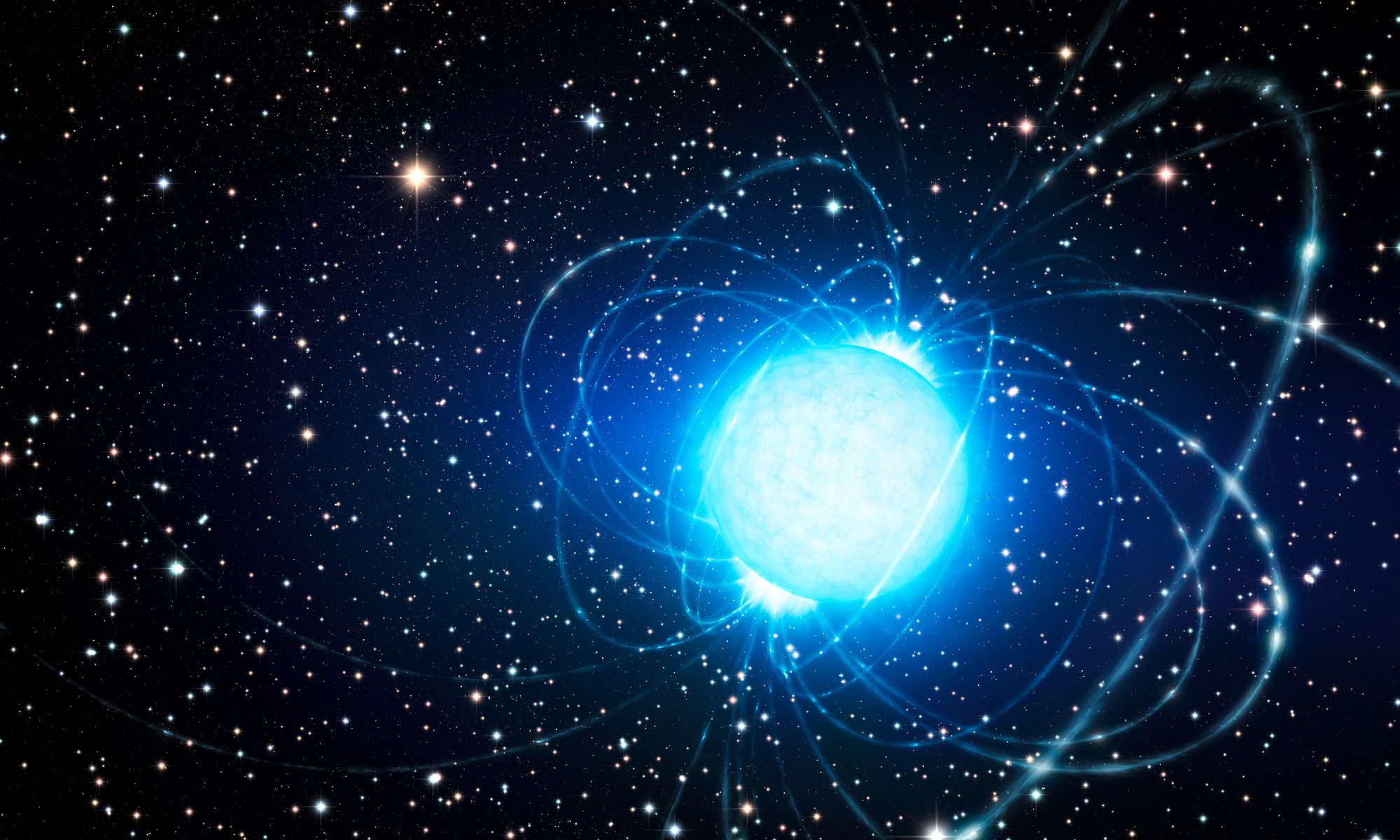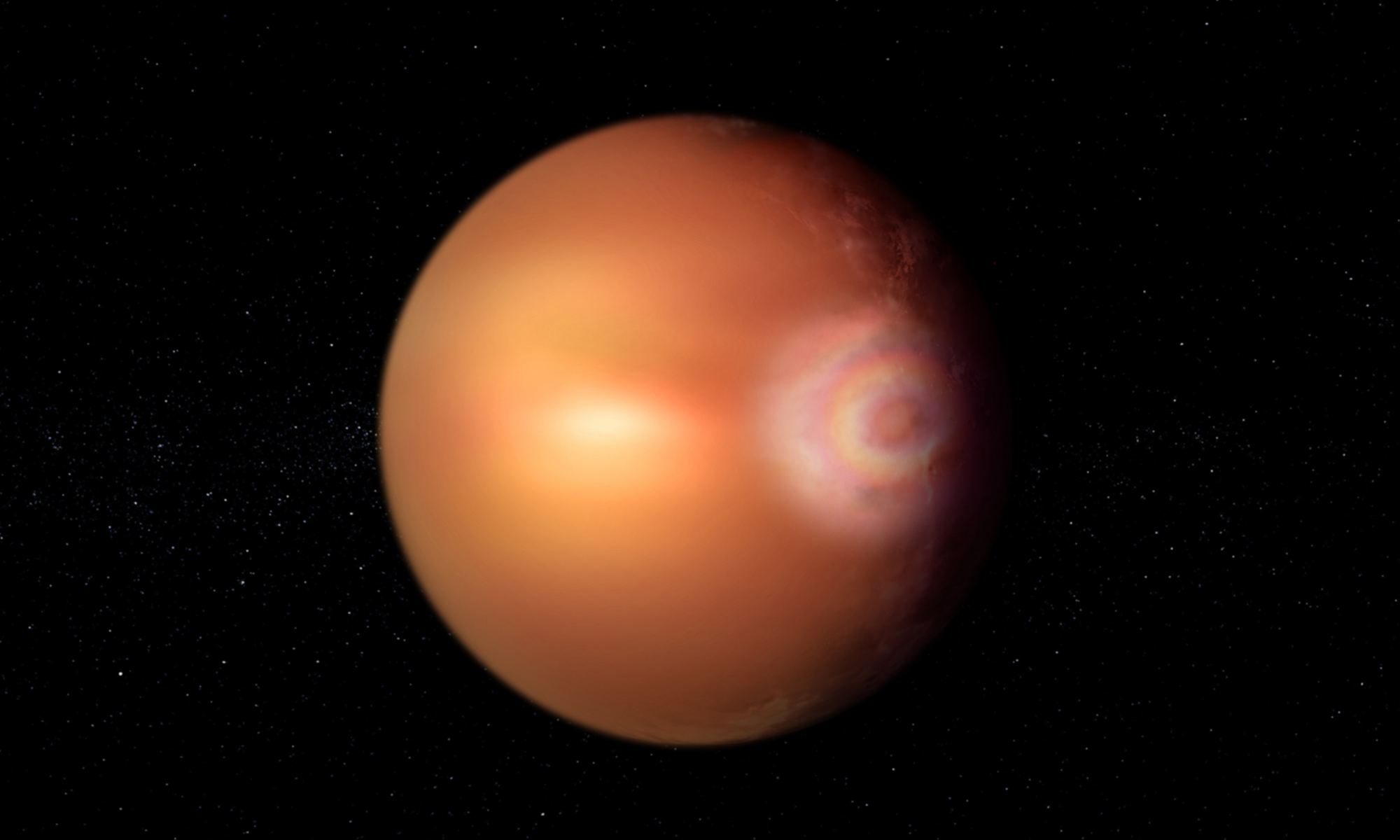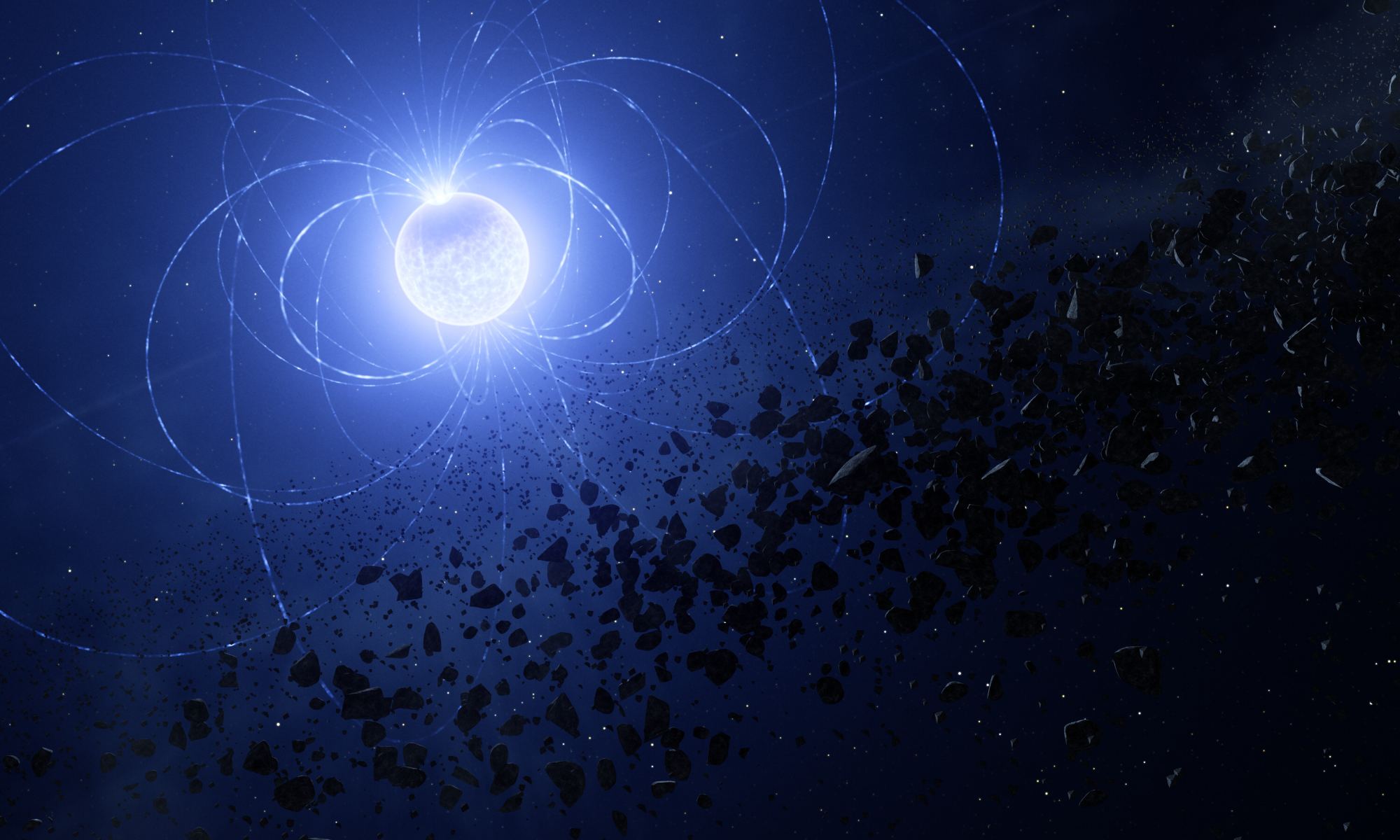One of the big mysteries about dark matter particles is whether they interact with each other. We still don’t know the exact nature of what dark matter is. Some models argue that dark matter only interacts gravitationally, but many more posit that dark matter particles can collide with each other, clump together, and even decay into particles we can see. If that’s the case, then objects with particularly strong gravitational fields such as black holes, neutron stars, and white dwarfs might capture and concentrate dark matter. This could in turn affect how these objects appear. As a case in point, a recent study looks at the interplay between dark matter and neutron stars.
Continue reading “Neutron Stars Could be Heating Up From Dark Matter Annihilation”The First Atmospheric Rainbow on an Exoplanet?
When light strikes the atmosphere all sorts of interesting things can happen. Water vapor can split sunlight into a rainbow arc of colors, corpuscular rays can stream through gaps in clouds like the light from heaven, and halos and sundogs can appear due to sunlight reflecting off ice crystals. And then there is the glory effect, which can create a colorful almost saint-like halo around objects.
Continue reading “The First Atmospheric Rainbow on an Exoplanet?”Hubble Sees a Star About to Ignite
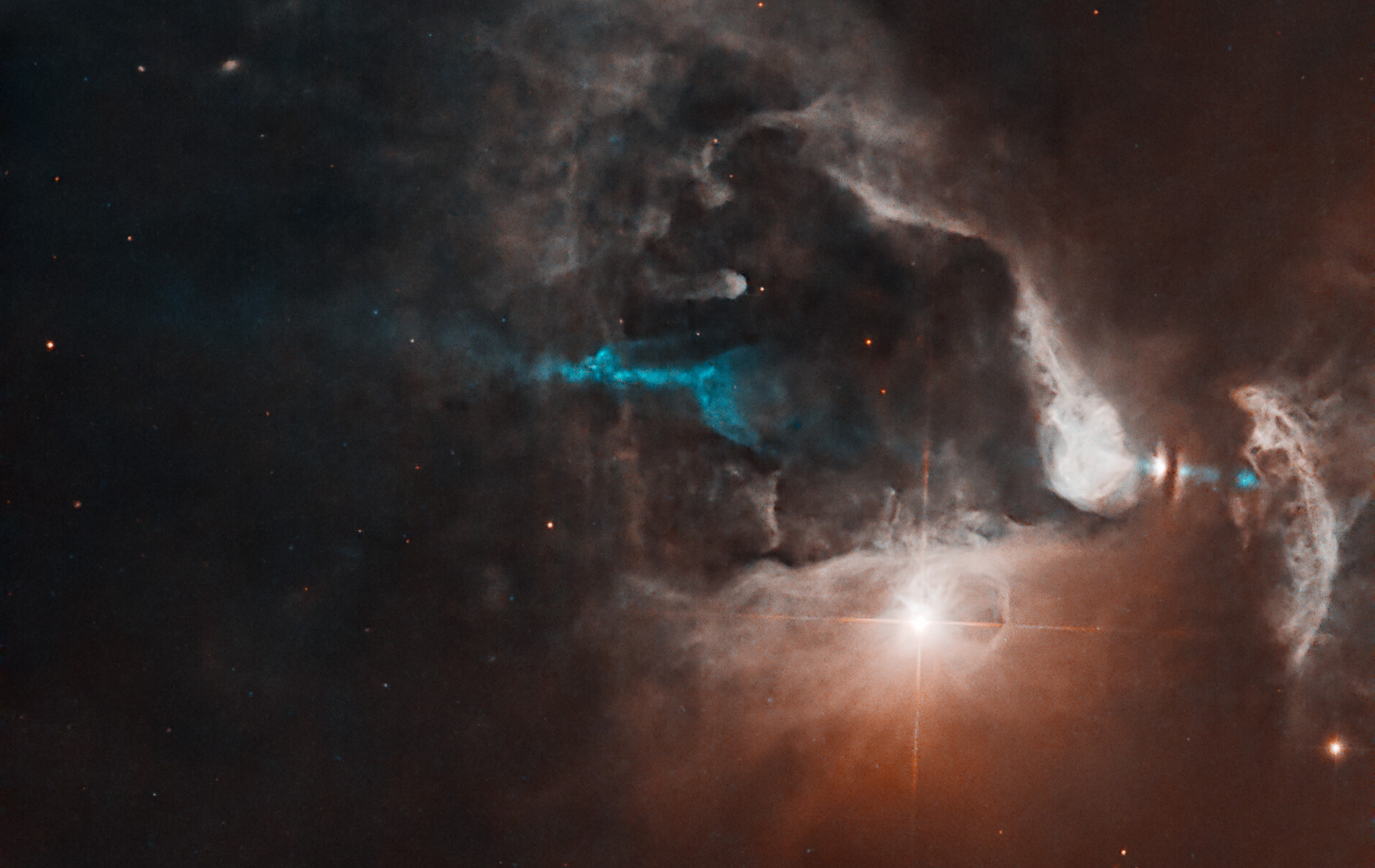
We know how stars form. Clouds of interstellar gas and dust gravitationally collapse to form a burst of star formation we call a stellar nursery. Eventually, the cores of these protostars become dense enough to ignite their nuclear furnace and shine as true stars. But catching stars in that birth-moment act is difficult. Young stars are often hidden deep within their dense progenitor cloud, so we don’t see their light until they’ve already started shining. But new observations from the Hubble Space Telescope have given us our earliest glimpse of a shiny new star.
Continue reading “Hubble Sees a Star About to Ignite”Merging Stars Can Lead to Blue Supergiants

In the constellation of Orion, there is a brilliant bluish-white star. It marks the right foot of the starry hunter. It’s known as Rigel, and it is the most famous example of a blue supergiant star. Blue supergiants are more than 10,000 times brighter than the Sun, with masses 16 – 40 times greater. They are unstable and short-lived, so they should be rare in the galaxy. While they are rare, blue supergiants aren’t as rare as we would expect. A new study may have figured out why.
Continue reading “Merging Stars Can Lead to Blue Supergiants”Dwarf Galaxies Could be the Key to Explaining Dark Matter
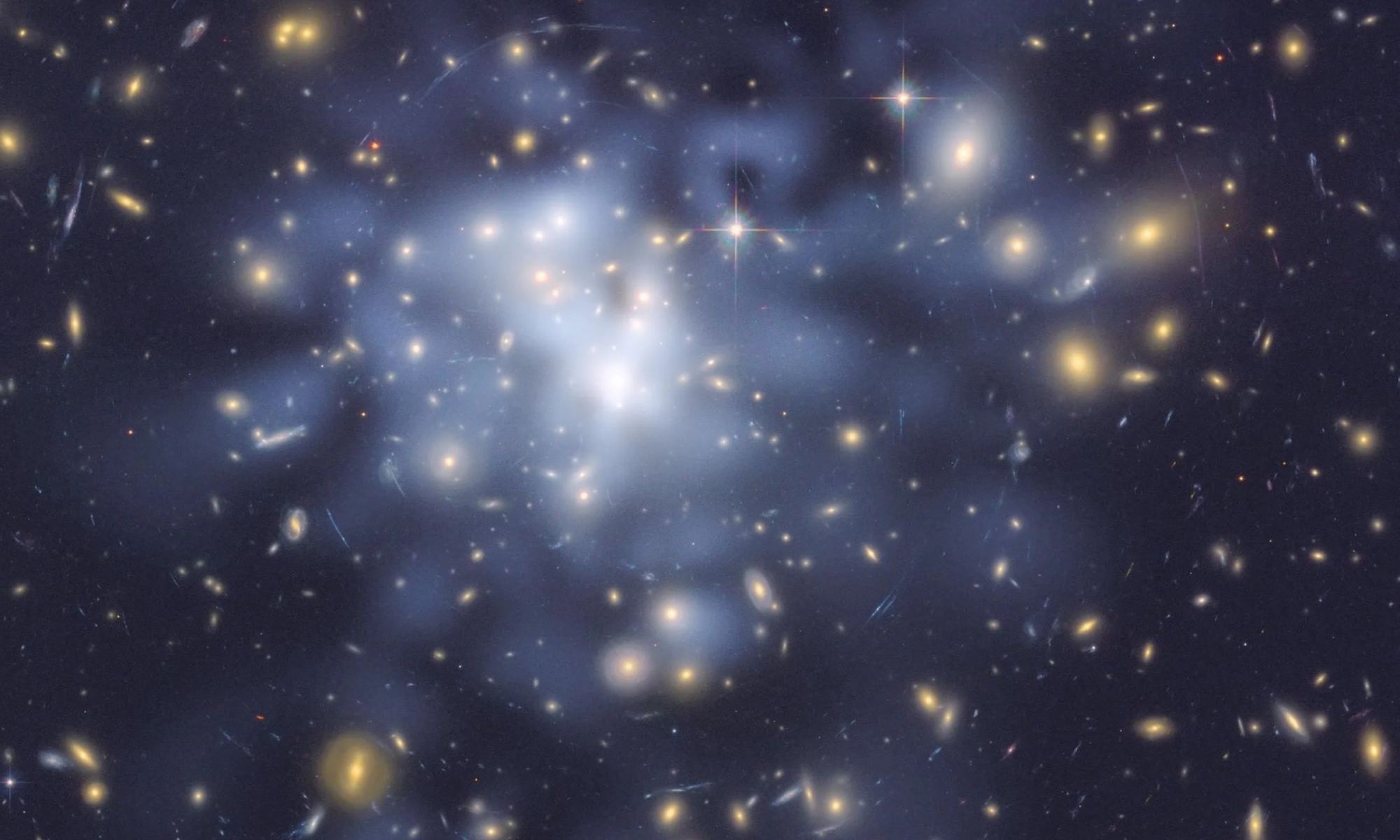
If you have a view of the southern celestial sky, on a clear night you might see two clear smudges of light set off a bit from the great arch of the Milky Way. They are the Large and Small Magellanic Clouds, and they are the most visible of the dwarf galaxies. Dwarf galaxies are small galaxies that typically cluster around larger ones. The Milky Way, for example, has nearly two dozen dwarf galaxies. Because of their small size, they can be more significantly affected by dark matter. Their formation may even have been triggered by the distribution of dark matter. So they can be an excellent way to study this mysterious unseen material.
Continue reading “Dwarf Galaxies Could be the Key to Explaining Dark Matter”A 790,000 Year-Old Asteroid Impact Could Explain Seafloor Spherules
Our solar system does not exist in isolation. It formed within a stellar nursery along with hundreds of sibling stars, and even today has the occasional interaction with interstellar objects such as Oumuamua and Borisov. So it’s reasonable to presume that some interstellar material has reached Earth. Recently Avi Loeb and his team earned quite a bit of attention with a study arguing that it had found some of this interstellar stuff on the ocean seabed. But a new study finds that the material has a much more local origin.
Continue reading “A 790,000 Year-Old Asteroid Impact Could Explain Seafloor Spherules”Black Holes Need Refreshing Cold Gas to Keep Growing
The Universe is filled with supermassive black holes. Almost every galaxy in the cosmos has one, and they are the most well-studied black holes by astronomers. But one thing we still don’t understand is just how they grew so massive so quickly. To answer that, astronomers have to identify lots of black holes in the early Universe, and since they are typically found in merging galaxies, that means astronomers have to identify early galaxies accurately. By hand. But thanks to the power of machine learning, that’s changing.
Continue reading “Black Holes Need Refreshing Cold Gas to Keep Growing”White Dwarfs Might Be Less Dead Than We Thought
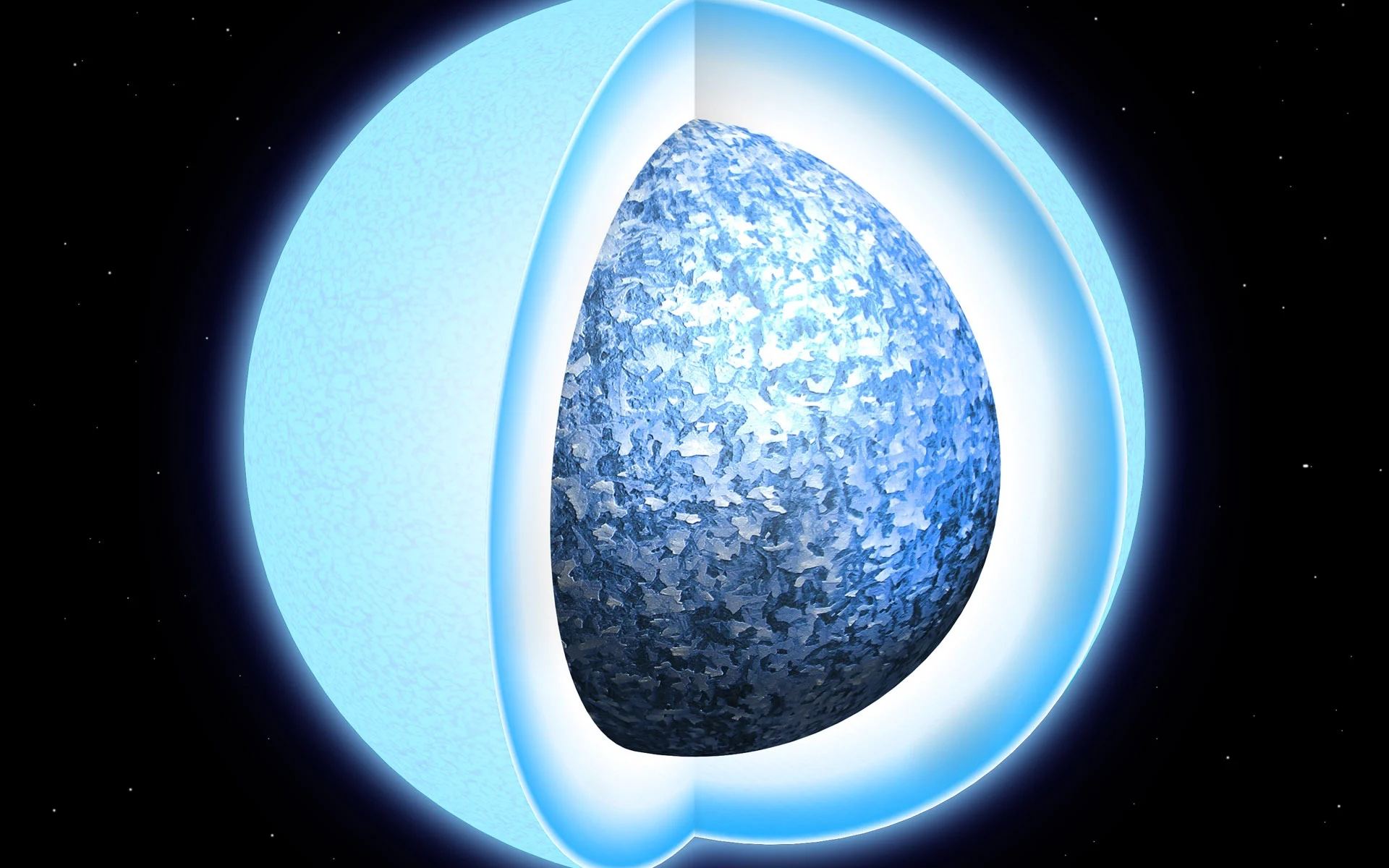
At the end of their lives, most stars including the Sun will become white dwarfs. After a red dwarf or sun-like star consumes all the hydrogen and helium it can, the remains of the star will collapse under its own weight, shrinking ever more until the quantum pressure of electrons becomes strong enough to counter gravity. White dwarfs begin their days as brilliantly hot embers of degenerate matter and grow ever cooler and dimmer as they age.
Continue reading “White Dwarfs Might Be Less Dead Than We Thought”Webb Sees a System That Just Finished Forming its Planets
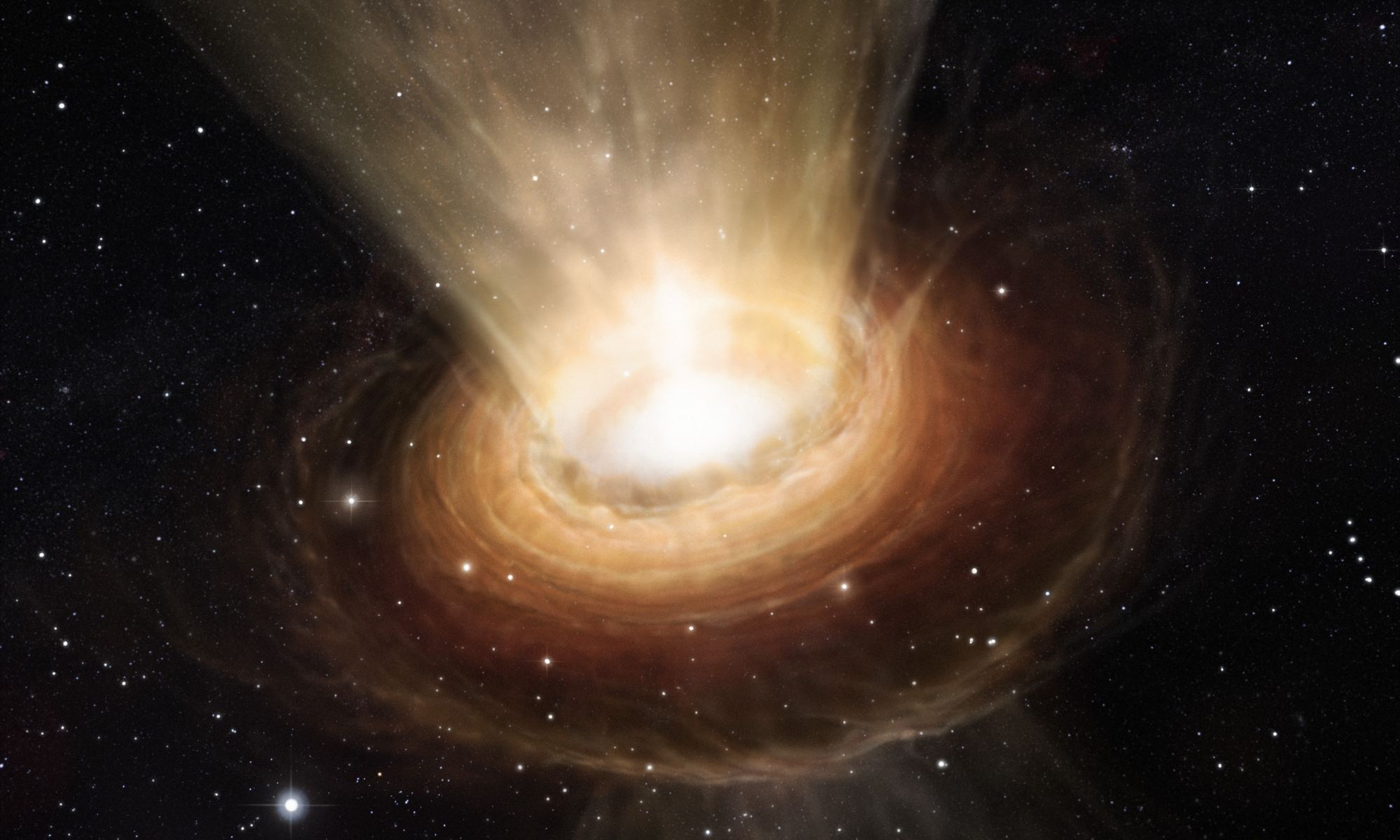
Nearly 5 billion years ago a region of gas gravitationally collapsed within a vast molecular cloud. At the center of the region, the Sun began to form, while around it formed a protoplanetary disk of gas and dust out of which Earth and the other planets of the solar system would form. We know this is how the solar system began because we have observed this process in systems throughout the galaxy. But there are details of the process we still don’t understand, such as why gas planets are relatively rare in our system.
Continue reading “Webb Sees a System That Just Finished Forming its Planets”Astronomers Can See the Impact Site Where an Asteroid Crashed Into a White Dwarf
Nothing is immortal. Everything has a finite existence, including the stars themselves. How a star dies depends on several factors, most importantly their mass. For the Sun, this means that in several billion years it will swell to a red giant as it churns through the last of its nuclear fuel. The core that remains will then collapse to become a white dwarf. Of course, the Sun is home to several planets, including Earth. What of their fate? What of ours? According to a recent study, the Sun’s death might consume Earth in the end.
Continue reading “Astronomers Can See the Impact Site Where an Asteroid Crashed Into a White Dwarf”
